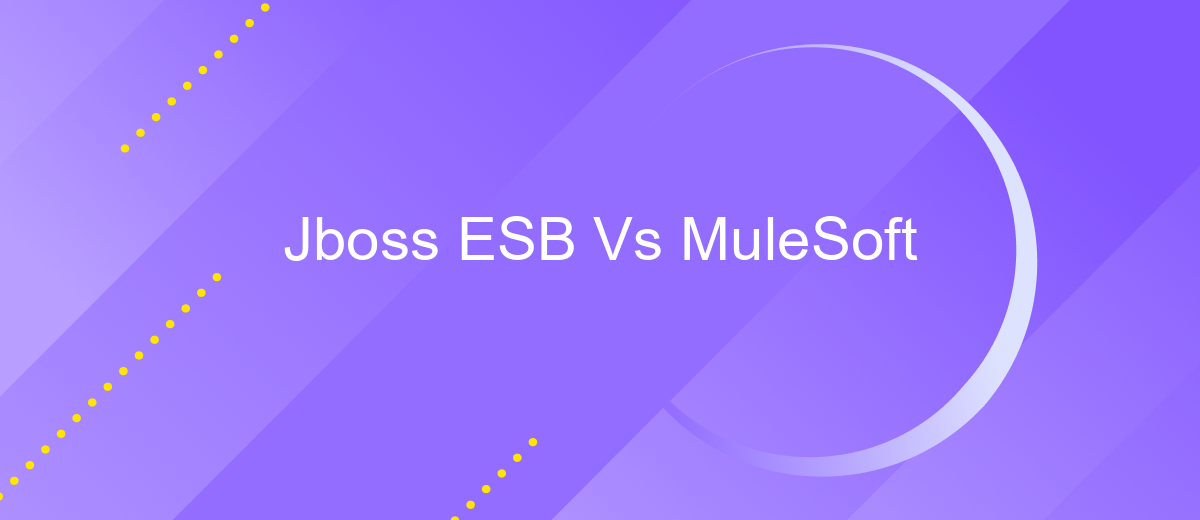Jboss ESB Vs MuleSoft
In the rapidly evolving world of enterprise integration, choosing the right ESB (Enterprise Service Bus) is crucial for seamless communication between diverse applications. This article delves into a comparative analysis of two leading ESB solutions: JBoss ESB and MuleSoft. By examining their features, performance, and scalability, we aim to provide insights that will help businesses make an informed decision tailored to their specific needs.
Overview
Jboss ESB and MuleSoft are two prominent enterprise service bus (ESB) solutions that facilitate integration and communication between different applications and services within an organization. Both platforms offer robust tools for managing complex integrations, enhancing data flow, and improving overall system efficiency.
- Jboss ESB: An open-source platform that provides a comprehensive suite of tools for enterprise integration, including service orchestration, message transformation, and routing capabilities.
- MuleSoft: A leading integration platform that offers extensive API management, connectivity, and orchestration features, making it easier to connect applications, data, and devices.
- ApiX-Drive: A versatile service that simplifies the process of setting up integrations by providing a user-friendly interface and pre-built connectors for various applications and services.
Choosing between Jboss ESB and MuleSoft depends on specific business needs, budget, and technical requirements. While Jboss ESB is a cost-effective solution with strong community support, MuleSoft offers more advanced features and commercial support, making it suitable for larger enterprises. Additionally, tools like ApiX-Drive can complement these platforms by streamlining the integration setup process, ensuring seamless data flow across systems.
Key Features Comparison

Jboss ESB and MuleSoft are two prominent tools in the realm of enterprise service buses, each offering distinct features. Jboss ESB, an open-source solution, is known for its robust performance and flexibility, allowing developers to integrate various applications seamlessly. It supports various protocols and data formats, providing a versatile platform for complex integrations. On the other hand, MuleSoft, a commercial solution, excels with its user-friendly interface and extensive out-of-the-box connectors, which simplify the integration process. MuleSoft's Anypoint Platform is particularly praised for its API management capabilities, enabling efficient monitoring and control over integrations.
Both platforms offer strong support for service orchestration, but MuleSoft stands out with its comprehensive API-led connectivity approach. This approach facilitates the creation of reusable APIs, streamlining the integration process across multiple systems. Jboss ESB, while powerful, often requires more manual configuration and coding effort. For businesses seeking a more automated and user-friendly integration setup, services like ApiX-Drive can complement these platforms by providing additional tools for seamless integration. ApiX-Drive offers a no-code solution for connecting various applications, making it an excellent choice for companies looking to enhance their integration capabilities without extensive technical expertise.
Architecture Comparison

When comparing the architectures of JBoss ESB and MuleSoft, it's important to note their fundamental design philosophies and how they manage integration tasks. JBoss ESB is built on a robust, open-source framework that emphasizes flexibility and modularity, allowing developers to create custom solutions tailored to specific business needs. MuleSoft, on the other hand, offers a more comprehensive, out-of-the-box solution with its Anypoint Platform, which provides a unified, low-code environment for designing, deploying, and managing APIs and integrations.
- Flexibility: JBoss ESB offers greater flexibility through its open-source nature, enabling extensive customization.
- Comprehensiveness: MuleSoft's Anypoint Platform is more comprehensive, providing a wide range of pre-built connectors and tools for rapid integration.
- Ease of Use: MuleSoft excels in ease of use with its low-code environment, whereas JBoss ESB may require more technical expertise.
- Scalability: Both platforms are scalable, but MuleSoft's cloud-native architecture offers more seamless scalability options.
For businesses looking to streamline their integration processes, tools like ApiX-Drive can complement both JBoss ESB and MuleSoft. ApiX-Drive offers an intuitive interface and numerous pre-built connectors, making it easier to automate data flows between various applications without extensive coding. This can be particularly beneficial for organizations aiming to enhance their integration capabilities quickly and efficiently.
Use Cases

When comparing JBoss ESB and MuleSoft, it's essential to understand their use cases to determine which is the best fit for your organization. JBoss ESB, being an open-source solution, is ideal for enterprises looking for a cost-effective and flexible integration platform. It is highly suitable for organizations that have the technical expertise to manage and customize their ESB without incurring significant licensing costs.
On the other hand, MuleSoft is a commercial solution that offers extensive support and a wide range of pre-built connectors, making it suitable for enterprises that need a robust and scalable integration platform. MuleSoft's Anypoint Platform is designed to handle complex integrations with ease, providing a user-friendly interface and comprehensive support.
- JBoss ESB: Cost-effective, open-source, customizable, suitable for technically proficient teams.
- MuleSoft: Commercial, extensive support, pre-built connectors, user-friendly, scalable.
For businesses looking to streamline their integration processes without extensive technical overhead, services like ApiX-Drive can be valuable. ApiX-Drive provides a simple, no-code solution for connecting various applications and automating workflows, making it an excellent complement to either JBoss ESB or MuleSoft.
Conclusion
In conclusion, both JBoss ESB and MuleSoft offer robust solutions for enterprise service bus needs, each with its unique strengths and weaknesses. JBoss ESB is an excellent choice for organizations that prioritize open-source solutions and have the in-house expertise to manage and customize the platform. Its flexibility and cost-effectiveness make it a strong contender for businesses looking to minimize expenses while maintaining control over their integration processes.
On the other hand, MuleSoft excels in providing a comprehensive, user-friendly platform with extensive support and a wide range of pre-built connectors. This makes it ideal for enterprises seeking a more streamlined and less technically demanding integration solution. Additionally, services like ApiX-Drive can further enhance the integration capabilities of both platforms by offering seamless connectivity and automation options, ensuring that businesses can efficiently manage their workflows and data exchanges. Ultimately, the choice between JBoss ESB and MuleSoft will depend on the specific needs and resources of the organization.
FAQ
What are the main differences between JBoss ESB and MuleSoft?
Which platform is more suitable for a large enterprise?
How do JBoss ESB and MuleSoft handle API management?
What are the costs associated with using JBoss ESB and MuleSoft?
Can I integrate JBoss ESB or MuleSoft with other automation and integration services?
Strive to take your business to the next level, achieve your goals faster and more efficiently? Apix-Drive is your reliable assistant for these tasks. An online service and application connector will help you automate key business processes and get rid of the routine. You and your employees will free up time for important core tasks. Try Apix-Drive features for free to see the effectiveness of the online connector for yourself.

